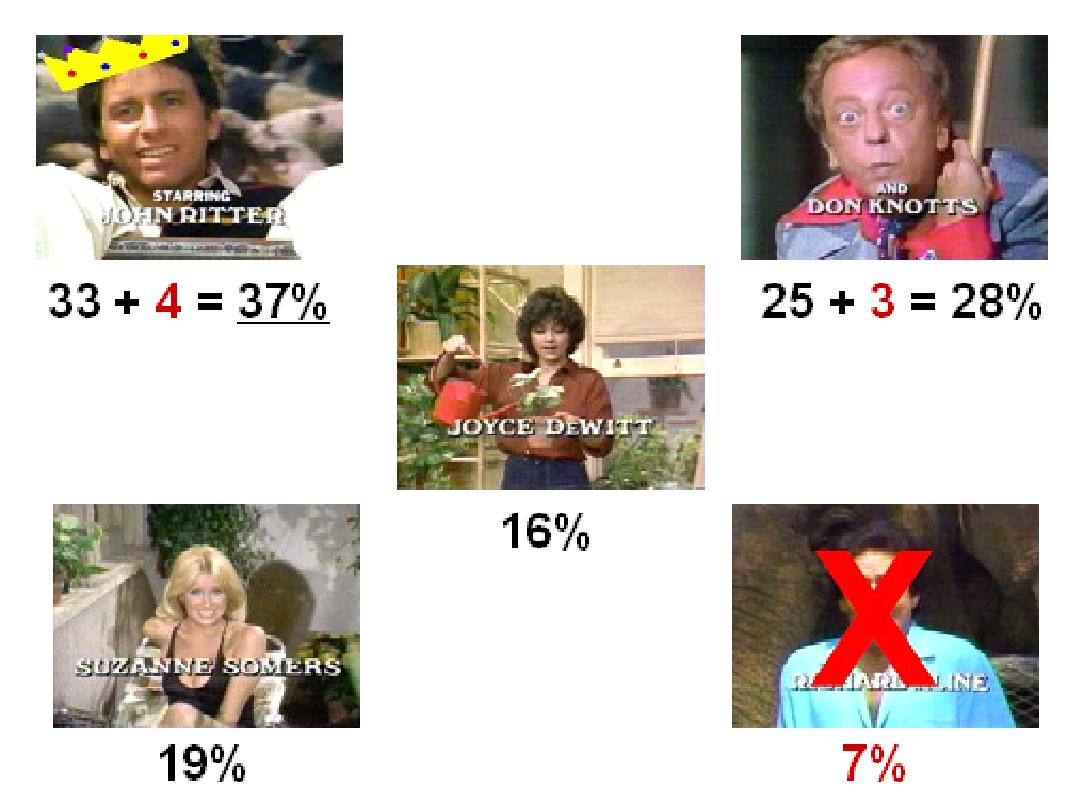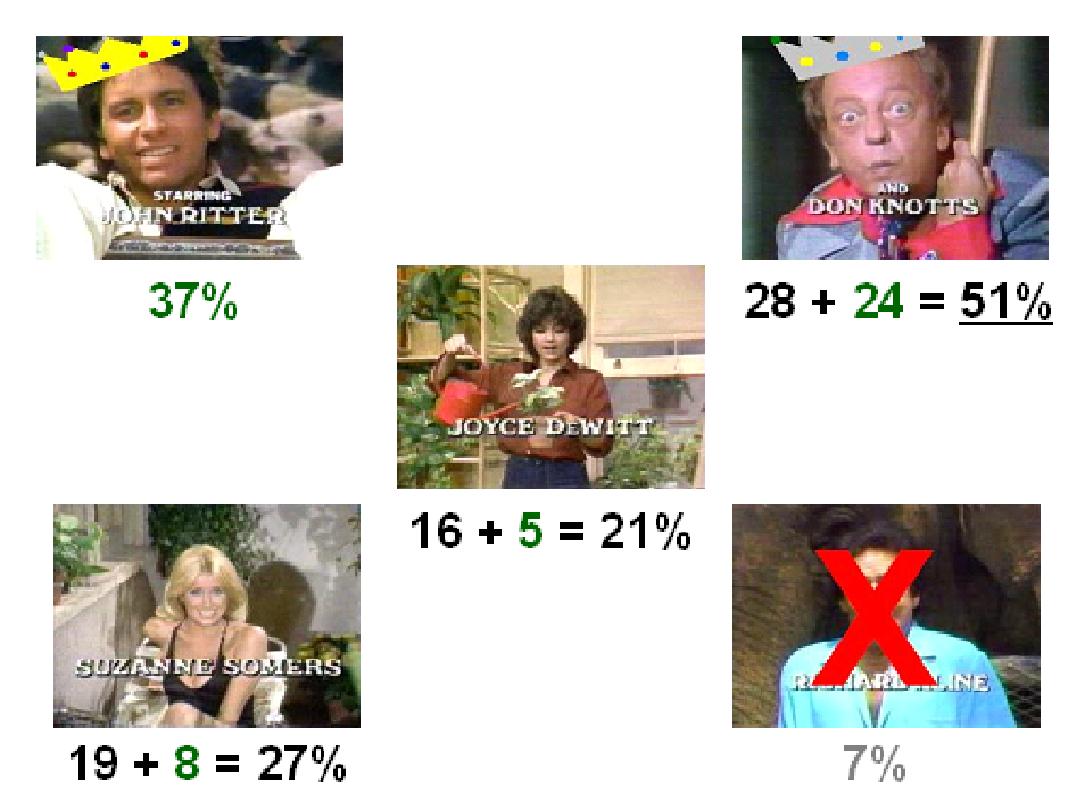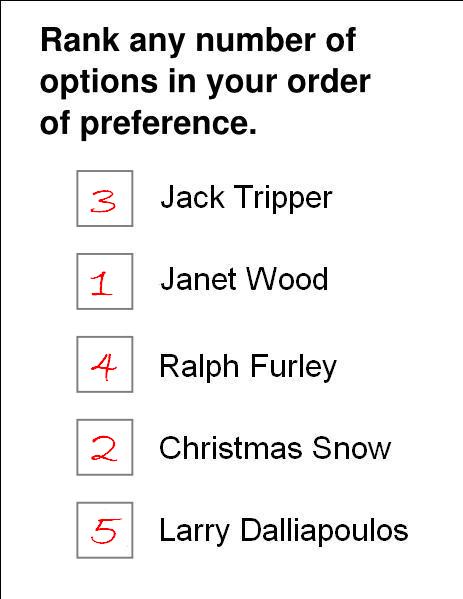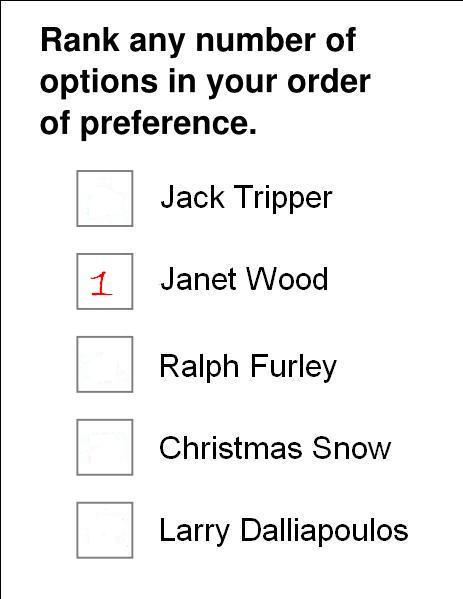
So how would that change things from our single-winner example? Not by much. Let’s go back to that example but instead of voting for one “Favourite Three’s Company Character”, we’re now voting for two “Favourite Three’s Company Characters” simultaneously. We’d have our first round voting results as before (Jack 33%, Janet 16%, Mr. Furley 25%, Chrissy 19% and Larry 7%) and, as before, we still don’t have a winner with a majority vote.
(Incidentally, the number of votes needed to win in this case, or any case where you are voting to elect more than one position simultaneously, would not be 50% + 1 because it’s mathematically impossible for two people to get 50% + 1 at the same time. In this particular case, with two positions being elected, a majority would be 33.3% + 1. There are calculations to figure that out; but you don’t need to worry about them right now, I’ll discuss them in a future blog post).
As with the first election, we’ll eliminate Larry, take a revote…
FTCC Part Deux: Second Round Results

and find that Jack now has enough votes to take the first of the two “Favourite Three’s Company Character” crowns that are up for grabs. Congratulations to Jack.
Great, we have one winner; we need another. So we’ll move on to the next round and as before, we’re redistributing votes. Except this time this time, instead of redistributing the votes on an eliminated candidate, we’re now redistributing the votes of candidate who has just been elected. (Also, because we’re now back to voting for one available position, the number of votes required to win will again be 50% + 1).
FTCC Part Deux: Final Round Results

And we find that a large majority of Jack’s voters, making their second or third choice, went to Mr. Furley giving him the second title (gee, fixing elections is kind of fun). Congratulations to Mr. Furley.
Again, as in the single-winner example, the ballot itself remains unchanged; you’re ranking your choices as before. That's all you have to do. Except this time not only are you indicating “If my 1st choice is eliminated, this is who I would vote for next", you’re also saying, “If my first choice is elected, and there are still other positions to be filled, this is who I would vote for next”. Again, you can rank some of the choices…

 … you can rank all of the choices…
… you can rank all of the choices……or you can rank just one.

The choice is entirely yours.
Now this may seem like a lot of work to vote in an election and it is; but not for you the voter. The only thing that changes for you is that you’re writing numbers down by a few names (or one, if you choose) instead of one X by one name. Then you can just walk away; the rest of the work is taken care of by the counters.
But by just making this minor adjustment in the way that we vote, we can have a significant impact in results of future elections. Results that are fairer and a more accurate reflection of the desires of voters. Don’t you think it’s worth it?
Back to How Does BC-STV Work? Mainpage.
No comments:
Post a Comment